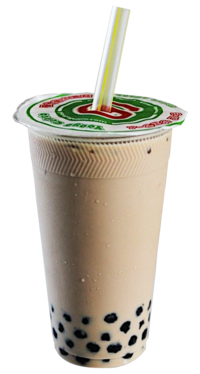
Photo from wikipedia
Currently, food industries use supplements from Aloe vera as highly concentrated powders (starting products), which are added to the final product at a concentration of 1x, meaning 10 g/L for decolourized… Click to show full abstract
Currently, food industries use supplements from Aloe vera as highly concentrated powders (starting products), which are added to the final product at a concentration of 1x, meaning 10 g/L for decolourized and spray-dried whole leaf powder (WLP) or 5 g/L for decolourized and spray-dried inner leaf powder (ILG) and also for nondecolourized and belt-dried inner leaf powder (ILF). Flavonoids, tannins, or saponins could not be detected for any starting product at this concentration and their total phenol concentration of 68–112 μM gallate-eq. was much lower than in fresh extract; however, their antioxidant capacity of 90–123 μM ascorbate-eq. for DPPH was similar to the fresh extract. Starting products, dissolved at 1x, had an aloin concentration of 0.04 to 0.07 ppm, a concentration much lower than the industry standard of 10 ppm for foodstuff. While decolourized starting products (i.e., treated with activated carbon) exhibited low cytotoxicity on HeLa cells (CC50 = 15 g/L ILG or 50 g/L WLP), ILF at CC50 = 1–5 g/L exhibited cytotoxic effects, that is, at concentrations even below the recommended for human consumption. Probable causes for the cytotoxicity of ILF are the exposure to high temperatures (70–85°C) combined with a high fibre content.
Journal Title: Journal of Food Quality
Year Published: 2017
Link to full text (if available)
Share on Social Media: Sign Up to like & get
recommendations!